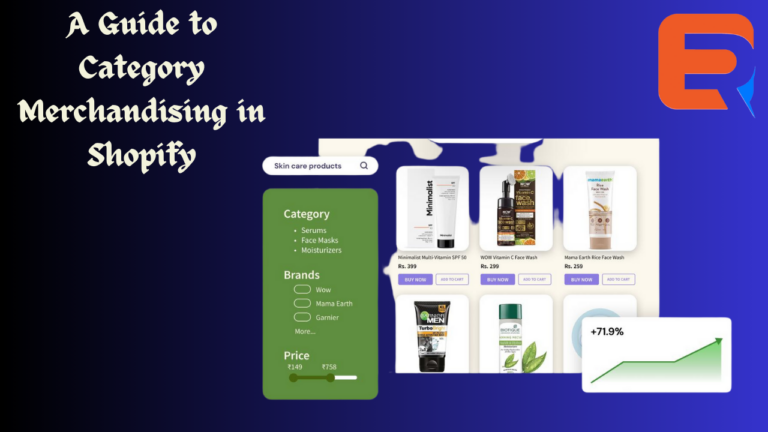In brick-and-mortar stores, visual merchandising has been used to a fine effect for ages. The same, nowadays, comes by as the tipping point for e-commerce stores as well and is a factor that distinguishes the average from the great.
When we consider the case of eCommerce stores, your digital content and website withhold the power to increase view times and make your website come by as professional to bring more sales. A better customer experience will induce customer retention.
Defining category merchandising
A strategic approach towards the promotion and presentation of products at an online mall is category mechanization, especially when different categories are referred to individually. The top parameters associated with the same are promotional tactics, personalized recommendations, visual display, and product categorization.
4 Components of Category Merchandising Strategy
1. Brand identity
The visual identity of your brand has to be a part of your website, holistically, and that’s what brand identity is all about. The areas covered herein should be your logo, the color palette, and the default styling elements. Such factors make your brand more noticeable to the end consumer.
2. UX/UI Design
UX has a lot to do with the overall experience that an individual visiting your store has. It stands for user experience. UI or user interface is different and stands for the design elements pertaining to aesthetics, feel, and the look of your store.
3. Curation
Curation, in the eCommerce space, refers to grouping specific products that have common attributes. These attributes may include function, collection, or material. This inspires consumers at the time of browsing and they make decisions aligned with their requirements. At times, curation refers to linking together the products that have a common attribute.
4. Personalized recommendations
In a good merchandising strategy, personalized product recommendations have an indispensable role to play. The products, herein, are recommended to specific consumers and the key recommendation criteria are search and purchase history. At times, the consumer’s location and the products included in their profile have a role to play in this.
3 strategies for effective e-commerce merchandising
With the magnanimous amounts of data that are nowadays available to online merchants, like shoppers’ activities on their websites, personalizing the shopping experience is easier.
1. Mobile Optimization
Ease of navigation and quick loading of pages are factors that aid with mobile optimization in the light of the fact that a third of American internet users buy something on their phone each week.
2. Using autocomplete to optimize search results
Autocomplete search is occassionally also known as predictive search and this search automatically shares relevant recommendations with online shoppers when they begin to type in the search box.
3. Making it personal
Product recommendations guide shoppers in their shopping journey. Online merchants should, for the purpose, of using an algorithm that groups similar products. Suggesting a complimentary item or two will deliver more choices for your consumers.
Conclusion
The essence of category merchandising is to make shopping easier for the consumers. This has a lot to do with using consumer data to a good effect, which keeps your shoppers coming back. More conversions and higher ROIs are hidden advantages.

